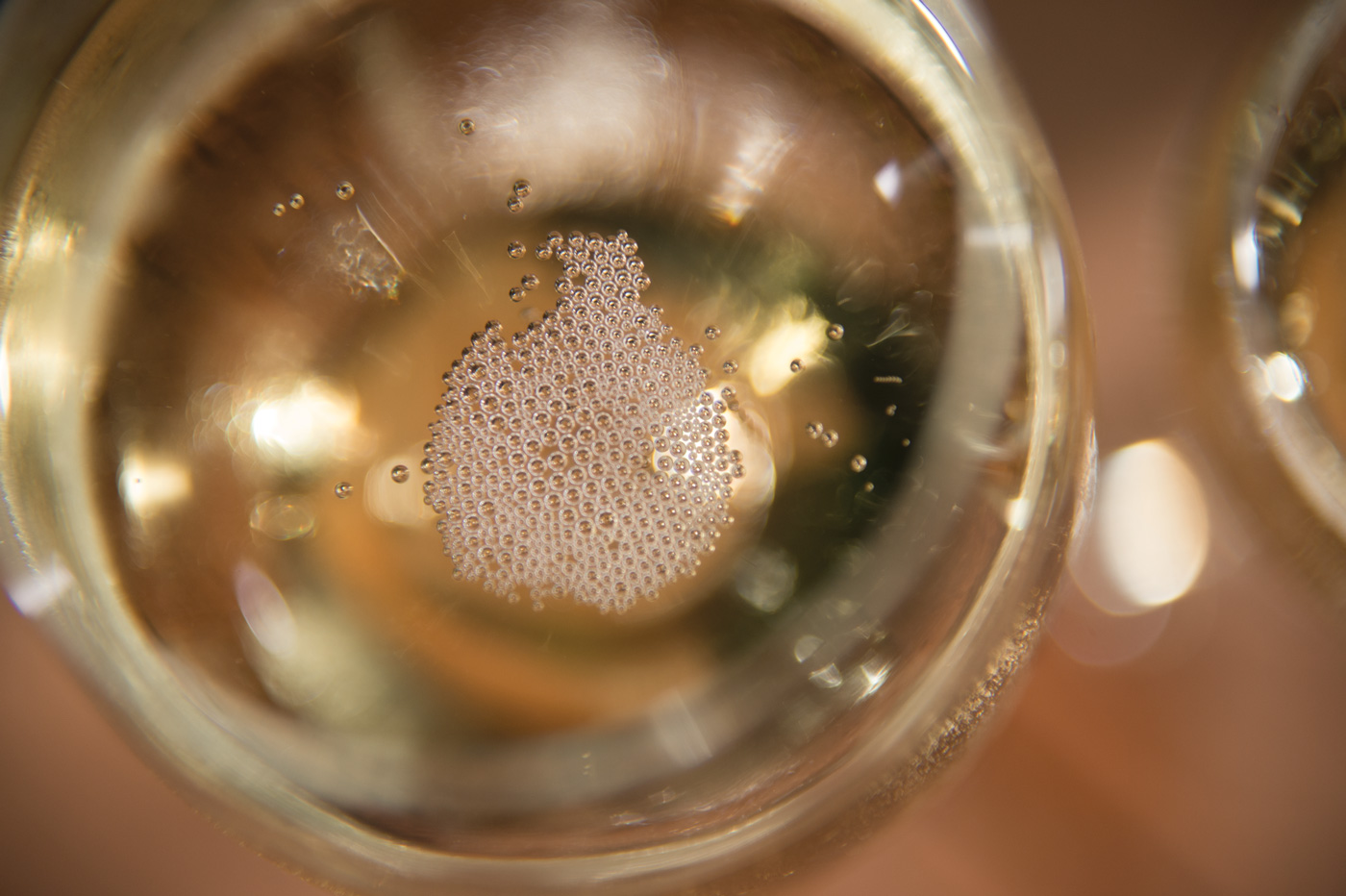There are many different ways to create bubbles in wine. Some are easy, some are incredibly involved.
In this article, we are going to compare the two main ways of adding bubbles using a secondary fermentation. There’s Charmat, which is definitely more complicated than carbonation. And then there’s Traditional Method, which is, well, insanely hard.
Terminology: These two methods of making a sparkling wine have many aliases.
- Traditional Method – aka Classic Method, Champagne Method, Méthode Traditionnelle, Méthode Champenoise, and Méthode Classique
- Charmat Method – aka Bulk Method, Tank Method, Cuve Close, and Metodo Italiano
Base Wine and Liqueur de Tirage: Both Traditional and Charmat methods begin with the creation of a base wine. This base wine is many times a blend of wines, from different grape varieties, different vineyards, and/or different vintages. Next, yeast and sugar are added to a small amount of the base wine. This mixture, called the liqueur de tirage, is added back to the base wine. It’s time for secondary fermentation!
Secondary Fermentation: The yeast converts the sugar in the wine to CO2 and alcohol. The CO2 is trapped in either a bottle or a tank, depending on the method.
- Traditional Method – The base wine is put into bottles to undergo the secondary fermentation. The bottles are aged from 9 months to over 5 years.
- Charmat Method – The wine is put into a stainless steel pressure tank to undergo the secondary fermentation. The process typically takes one to six weeks, a much shorter time than the Traditional Method.
Riddling/Removal of Lees:
- Traditional Method – Every bottle of traditional method bubbly undergoes the riddling process. This is when the bottles are put into riddling racks and rotated on a specific schedule to move the lees (dead yeast) to the neck of the bottle.
- Charmat Method – No riddling needed for this sparkling wine. Instead, the bulk wine is filtered prior to bottling to remove the lees.
Disgorging:
- Traditional Method – Yes, with this method, disgorging is needed. Disgorging is a process where we place the riddled wine in a neck freezer, which freezes all the lees into a nice little ice plug. Using a disgorging machine (or for magnums, we disgorge manually), we remove the cap from the bubbly and quickly remove the ice plug.
- Charmat Method – Nope. Since the yeast was removed via filtering, you get to skip this step with the charmat method.
Dosage: This is where the winemakers put their final stamp on the wines. They create a liquor made of still wines and sugar to add to the wine. This is known as the dosage; the amount of sugar used for the dosage varies and will dictate the sweetness of the wine. Our winemaking team does quite a bit of taste testing before they decide on the final dosage. While they might have a general idea as to how dry they would like the final bubbly to taste, there is a careful balancing act going on at the same time as they look for the right formula to balance the acidity and bring out all the amazing flavors.
- Traditional Method – A dosage is added to each bottle to not only enhance the wine, but also to replace the wine that was lost in the disgorging process.
- Charmat Method – These wines also receive a dosage, but it is added to the bulk wine prior to bottling.
Bottling:
- Traditional Method – With this method, the wine is bottled prior to secondary fermentation and remains in this bottle throughout production. Each bottle is unique and has its own batch. On the back of each label, we list the batch number, bottle number, and disgorgement date.
- Charmat Method – These wines are not bottled until the very end of production.
Taste, Aroma, and Bubbles:
- Traditional Method – Because these wines have more contact with the lees than the charmat method wines, traditional method bubbly typically has aromas and flavors such as toastiness, nuttiness, caramel, and yeastiness. The texture seems more smooth and creamy. The bubbles are tinier, and usually feel less aggressive in your mouth than the bubbles of charmat wines.
- Charmat Method – These sparklers tend to be fruitier than traditional-method sparkling wines, especially those wines that are fermented for a shorter time period. The bubbles are typically larger and coarser than the bubbles in traditional method wines.
Uniqueness:
- Traditional Method – Each bottle of bubbly is distinctly unique because the secondary fermentation, disgorging, and dosaging all occur individually and in the bottle you receive.
- Charmat Method – Every bottle from the same batch will be the same.
So why make Traditional Method sparkling wine? Why do people still use letterpress? Or dovetail joints? We make Traditional Method sparkling wine because we know that all the effort, skill, and craftsmanship that goes into the process results in something truly extraordinary and unique in every bottle. And we think it’s worth it.
